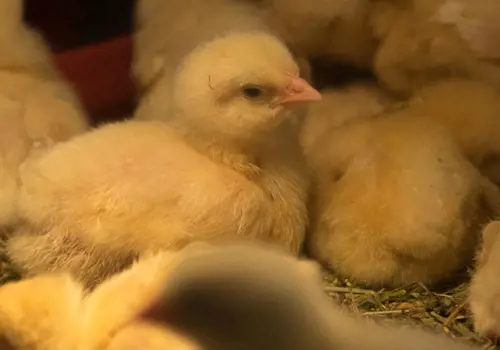
Housing & Brooding
Taking good care of your premium day old chicks
 A strong start is the basis for success
A strong start is the basis for success
This page provides comprehensive guidance on optimal care for premium chicks, with the aim of fostering their health and productivity as they mature into layers. The importance of proper housing and brooding during the early stages of development cannot be overstated, as good care during this critical period lays the foundation for a lifetime of robust health and productivity. The benefits of providing high-quality care will be evident throughout the entire productive lifespan of your layers.
Outlined below are several key strategies for preparing for the arrival of your day-old chicks, monitoring their behavior to ensure optimal development, and providing essential care during the first few weeks of life. While this guide offers valuable insights, please note that it is not intended to serve as a comprehensive instruction manual. For further information or more specialized guidance, please consult with a qualified expert or contact Kuipers Breeders directly.
Handle with care
The day-old chicks have undergone various treatments at the hatchery and have been transported by road. It is crucial to handle them with great care and provide all necessary measures to ensure their well-being during the journey and upon arrival at the rearing house. This includes appropriate housing, adequate nutrition, and attentive monitoring of their health and behavior. The stress of transport and adjustment to a new environment can be challenging for young chicks, so it is essential to take every precaution to ensure their comfort and safety.
Transportation
Transporting day-old chicks can be a delicate process that requires careful attention to several critical factors. Firstly, it is essential to thoroughly clean and disinfect the vehicles used to transport the chicks, as this can help prevent the spread of harmful bacteria and viruses. Additionally, it is important to avoid exposing the chicks to direct drafts during transport, which can lead to illness and other health complications. Maintaining a suitable temperature range of 26-27 degrees Celsius is also crucial for ensuring the chicks' well-being during the journey.

In situations where an environmentally controlled transport system is not available, it is advisable to transport the chicks at night. This can help minimize the risk of heat stress and other environmental stressors, which can be particularly challenging for young chicks. By taking these precautions and following best practices for transporting day-old chicks, you can help ensure their safe and healthy arrival at their destination.
 Preparations for Optimal Housing and Brooding of Chicks
Preparations for Optimal Housing and Brooding of Chicks
It is essential to make all necessary arrangements in advance to ensure that day-old chicks are provided with appropriate housing conditions and a suitable brooding setup. Creating a brooding area with only round corners is recommended to prevent suffocation by huddling. Additionally, it is crucial to maintain a suitable air temperature range of 33-35 degrees Celsius and provide clean, disinfected fresh water for the chicks.
To ensure that the chicks have access to sufficient nutrition upon arrival, it is advisable to fill the drinker plates with water and feeder plates with prestarter feed 15-30 minutes before the chickens arrive. When unloading and placing the chicks in their designated areas, it is important to do so as quickly as possible to minimize the stress and disruption to their environment. By following these best practices for housing and brooding day-old chicks, you can help ensure their health and well-being as they develop and mature.
House cleaning
Day-old chicks are highly susceptible to diseases, making it crucial to take appropriate measures to mitigate potential bio-security risks. To eliminate any potential sources of infection from the previous flock, it is essential to clean and disinfect all surfaces and equipment that the chicks will come into contact with. This includes removing the litter from the previous flock, taking down, repairing, and cleaning the curtains, thoroughly cleaning all equipment, and repairing any holes or other openings that could allow rodents or other pests to enter.
Finally, it is important to disinfect the entire house and all of its contents thoroughly to ensure that the environment is as safe and hygienic as possible for the new chicks. By following these best practices for cleaning and disinfecting the rearing house, you can help ensure the health and well-being of your day-old chicks.
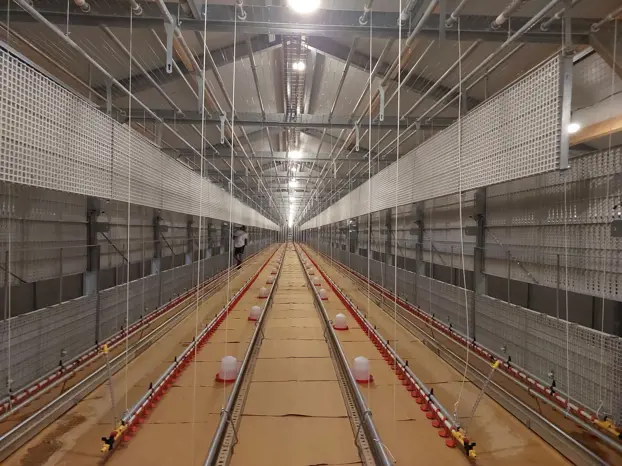
 Ensure biosecurity measures
Ensure biosecurity measures
Maintaining good hygiene practices is crucial for ensuring the health and safety of your day-old chicks. To prevent the introduction of potential sources of infection, it is important to change into clean clothes and shoes before entering the house. Additionally, it is recommended to wash and disinfect your hands thoroughly before handling the chicks. To prevent cross-contamination, it is advisable to keep the new chicks separate from any older laying hens or broilers.
Finally, keeping your farm clean and free from clutter can help minimize potential sources of disease and ensure a healthy and hygienic environment for your birds. By following these best practices for hygiene and sanitation, you can help ensure the success of your poultry operation.
Water & Feed
Providing early and easy access to fresh, clean water and good-quality feed is critical for the healthy development of the gastrointestinal tract and immune system in day-old chicks. Providing access to water and feed can help facilitate the absorption of residual yolk, which provides essential nutrients for the chick's early growth and development.
To ensure that chicks have easy access to water and feed, it is recommended to place drinkers and feeder plates throughout the brooding area in such a way that a chick is never more than 1 meter away from either. It is important to ensure that the water is clean and safe to drink, with an appropriate drinking water temperature between 20-25°C (68-77°F).
Additionally, water in the drinkers should be replaced at least every 3 hours to ensure that it remains fresh and free from any potential sources of contamination. By following these best practices for water and feed management, you can help ensure the healthy development and growth of your day-old chicks.
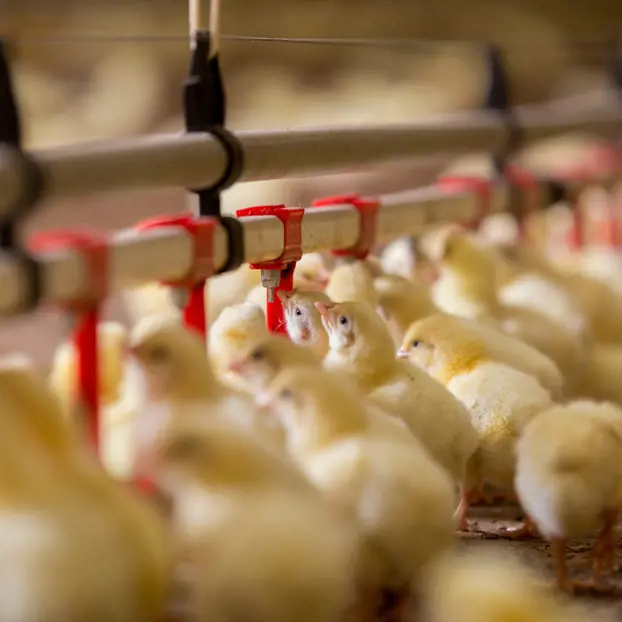
High quality chicks' prestarter feed
After arriving at their destination, day-old chicks are eager to start eating and drinking to satisfy their hunger. It is important to ensure that their crops are well-filled within the first day. To monitor their feeding progress, it is recommended to check the crop after 8 hours and again after 24 hours.
The crop should be rounded and feel soft. To support their nutritional needs, it is recommended to provide high-quality prestarter feed in the form of mini-pellets. Each pellet contains all the necessary nutrients for the chick's growth and development. Feed can be provided using feeder plates or by spreading the feed on a sack for easy access. Additionally, fresh feed should be provided regularly to ensure optimal nutrition for the chicks.
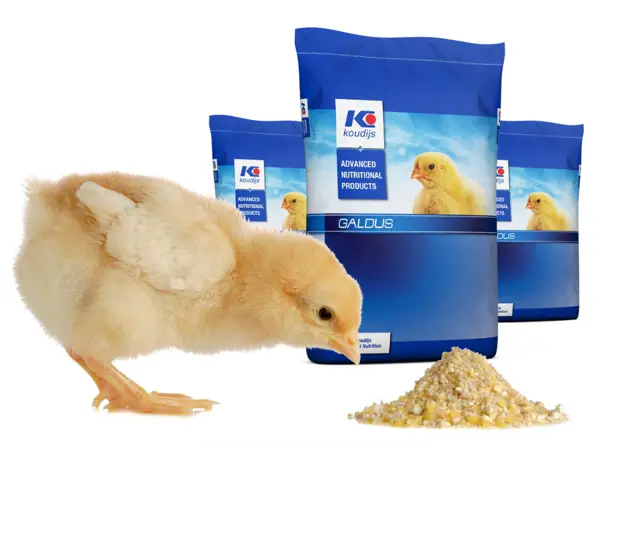
Chicks Behaviour
After arrival of the chicks, it is important to monitor their behavior to ensure they are comfortable and healthy. Here are key indicators to keep in mind:
- Too high temperatures: If the temperature is too high, chicks will move away from the heat source, droop their wings, become inactive and make less noise.
- Too low temperatures: Chicks will crowd together near the heat source and make sounds of distress, showing a rigid posture.
- Draught or uneven temperature distribution: If there are draughts or uneven temperature distribution, chicks may gather in specific corners and exhibit signs of discomfort.
- Correct temperatures: When temperatures are just right, chicks will be evenly spread across the space, move around freely, and make normal sounds.
To ensure optimal conditions, spread out the boxes with chicks around the house, place them by the feed and water, and check on them every few hours.
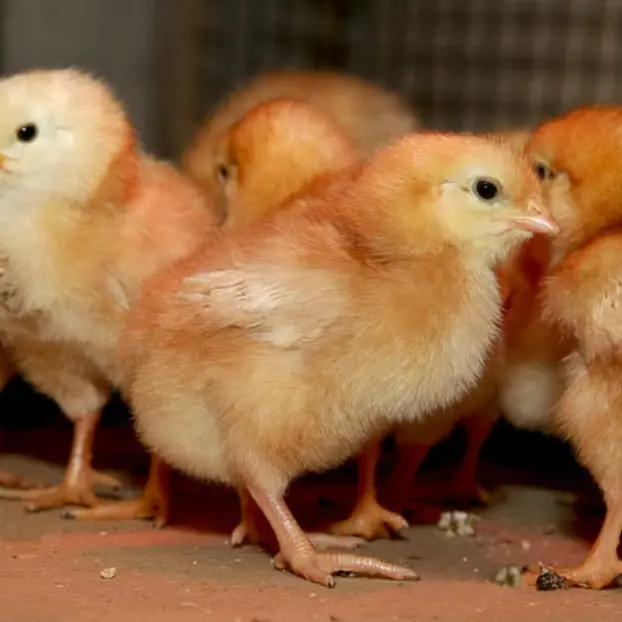
Light & beak treatment
Proper light sources with high intensity and without shadow points should be provided in the first few days to help chicks settle and find water and feed. After the first week, the light should be dimmed as much as possible to prevent feather pecking.
Beak treatment should only be done by skilled and trained individuals using the appropriate equipment. Typically, it is done between 6-8 weeks unless birds start to feather peck earlier.
Why choose Kuipers Breeders for high-quality chicks and expert support?
Kuipers Breeders provides chicks with proven genetics, excellent health, and full vaccinations before transport. Their expert guidance ensures a successful outcome, making them the preferred choice for initiating a high-performing flock.
Kuipers Breeders offers proven genetics for high-performing chicks
Originate from exceedingly healthy and fully vaccinated parent stock
Kuipers Breeders provides accompanying technical and farming guidance
